Imagine swimming through crystal-clear waters and discovering an otherworldly sight: hundreds of life-sized human sculptures standing silently on the ocean floor. These aren’t relics from a lost civilization, but the groundbreaking environmental art installations created by British sculptor Jason deCaires Taylor. His underwater museums are transforming marine ecosystems while creating unforgettable diving experiences around the world.
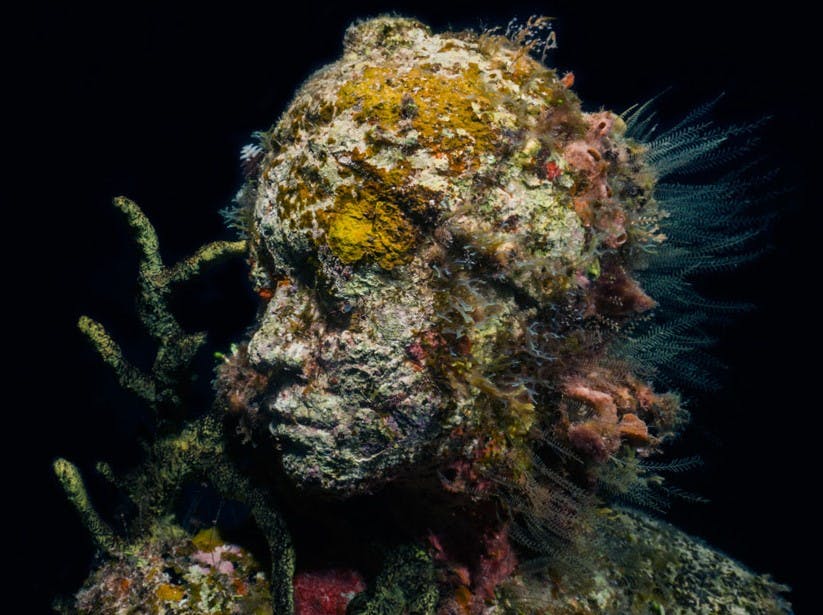
What Are Underwater Sculpture Museums?
Underwater sculpture museums are permanent art installations placed on the ocean floor, designed to create artificial reefs that support marine life while offering unique diving destinations. Jason deCaires Taylor pioneered this concept, creating the world’s first underwater sculpture park in Grenada in 2006.
These submerged art galleries serve multiple purposes:
- Offering unique diving and snorkeling experiences
- Creating new habitats for marine life
- Diverting tourists away from fragile natural reefs
- Raising awareness about ocean conservation

The Artist Behind the Underwater Museums
Jason deCaires Taylor’s journey into underwater art began in 2006 after witnessing hurricane damage to Grenada’s coral reefs. This devastation inspired him to create art that could actively contribute to marine ecosystem restoration.
As a sculptor, environmentalist, professional underwater photographer, and certified scuba instructor, Taylor brings a unique combination of skills to his work. His understanding of marine environments allows him to create installations that effectively serve both artistic and ecological purposes.
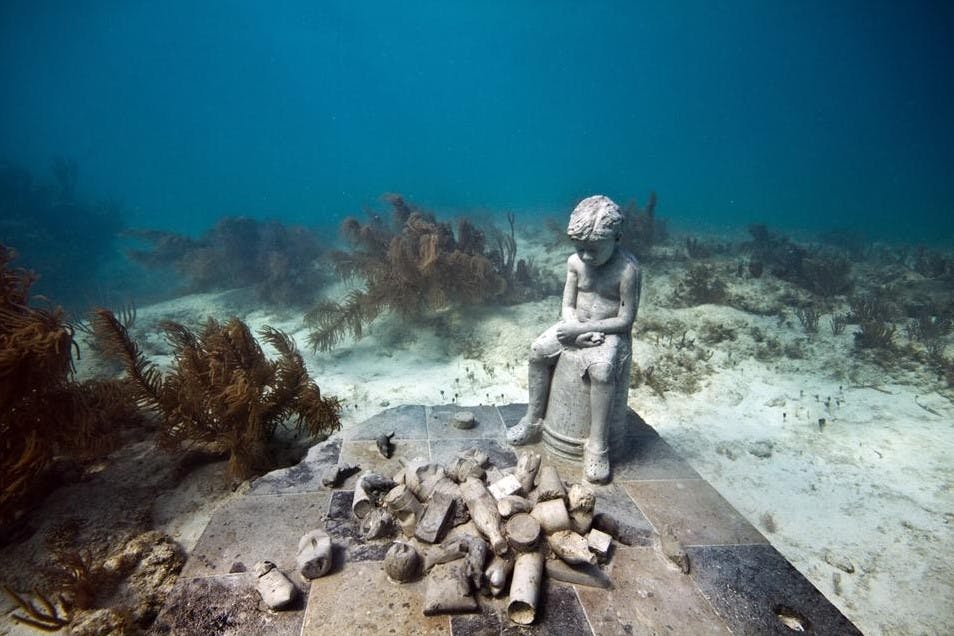
How the Underwater Sculptures Are Created
Creating sculptures for underwater museums involves specialized techniques and materials:
Environmental considerations: Placement accounts for water currents, depth, and sunlight to maximize marine growth potential.
Eco-friendly materials: Taylor uses pH-neutral marine cement that facilitates coral growth and withstands harsh ocean conditions.
Life casting: Many sculptures are cast from real people, creating authentic human forms with detailed expressions.
Strategic placement: Each sculpture, weighing up to eight tons, requires careful installation to avoid damaging existing marine ecosystems.
The process is labor-intensive, with some installations featuring hundreds of individual sculptures that must be strategically positioned on the ocean floor.

Famous Underwater Museum Locations
MUSA (Museo Subacuático de Arte), Mexico
The Cancún-based museum features over 500 sculptures, including “Silent Evolution,” an installation of 450 life-sized figures standing in formation. Since its creation in 2010, MUSA has become one of the largest and most visited underwater art attractions in the world.
Museo Atlántico, Lanzarote, Spain
Europe’s first underwater museum opened in 2016 in the Canary Islands. Notable installations include “The Photographer” and “Crossing the Rubicon,” a powerful installation depicting 35 figures walking toward a wall.
Cannes Underwater Eco-Museum, France
Located off the coast of Île Sainte-Marguerite near Cannes, this museum features six monumental portrait sculptures weighing 10 tons each. The faces are modeled after local community members of different ages.
NEST, Gili Islands, Indonesia
This installation in the clear waters of Indonesia features human figures alongside structures that provide shelter for marine life. The work highlights the interdependence between humans and the ocean environment.
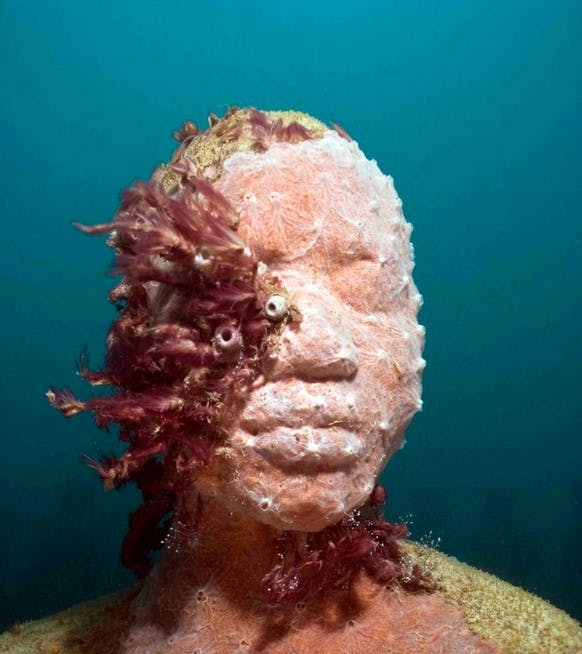
How Marine Life Transforms the Art
The true magic of Taylor’s work happens after installation, when marine organisms begin to transform the sculptures:
- Initial colonization: Within days, algae forms a thin film on the sculptures.
- Early settlers: Small invertebrates like tunicates and hydroids appear within weeks.
- Coral growth: After several months, slow-growing corals begin to attach to the textured surfaces.
- Complete transformation: Over years, the sculptures become fully integrated reef structures, sometimes completely transformed by coral growth.
This biological transformation turns each sculpture into a living, constantly changing artwork. What begins as a human form gradually becomes an integral part of the marine environment, blurring the line between art and nature.
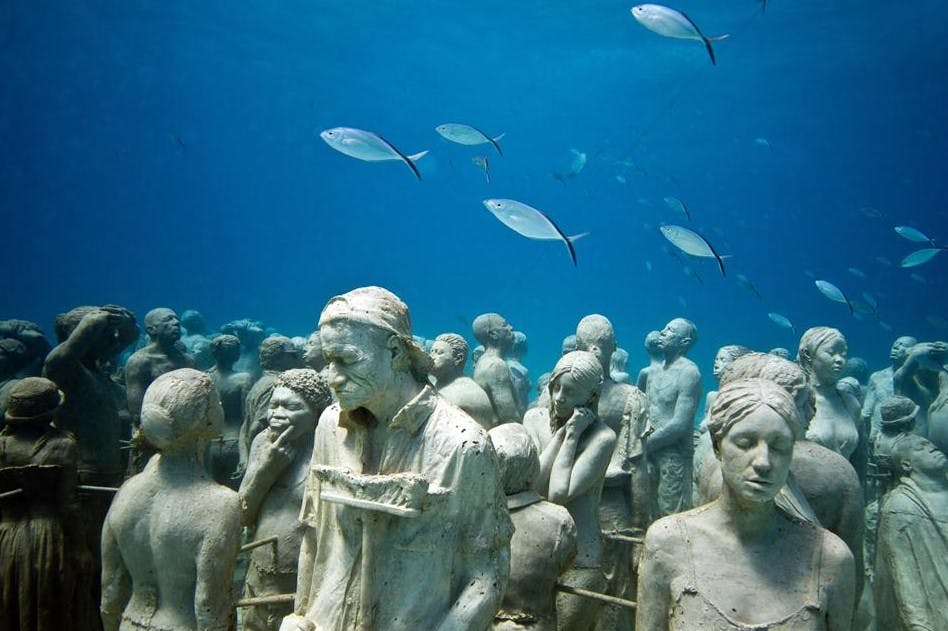
Environmental Impact and Conservation Benefits
Taylor’s underwater museums serve important environmental functions:
- Reef creation: Each sculpture becomes an artificial reef, providing habitat for hundreds of marine species.
- Tourist diversion: By attracting divers away from natural reefs, the museums help reduce pressure on fragile ecosystems.
- Conservation awareness: The emotional impact of seeing human forms transformed by marine life creates powerful conservation messaging.
- Scientific research: Many installations serve as study sites for marine biologists monitoring reef development.
Studies at the MUSA site in Mexico have documented over 2,000 juvenile fish and numerous coral species colonizing the sculptures, demonstrating their ecological value.
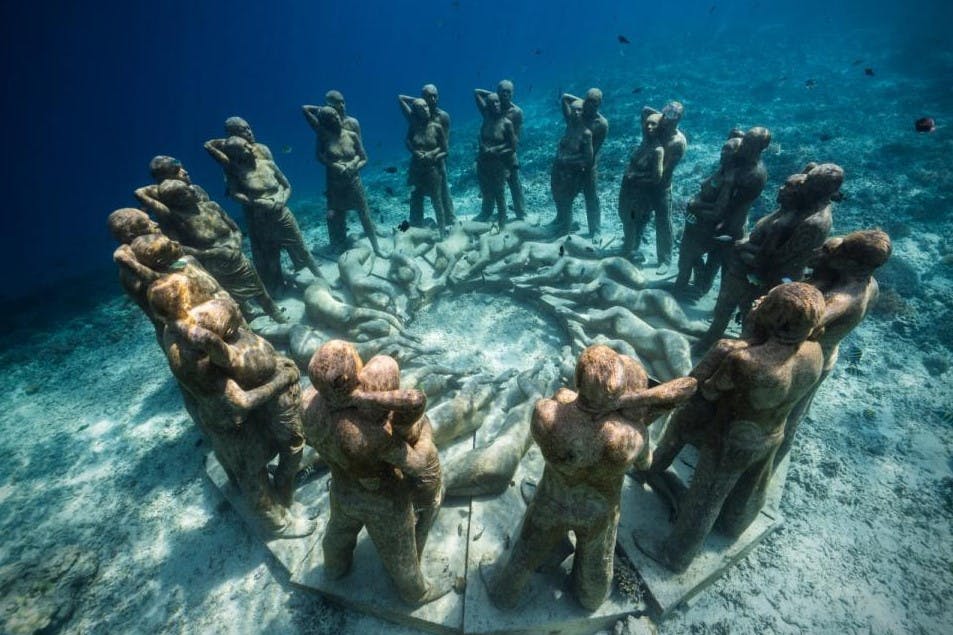
Experiencing the Underwater Museums
Visitors can experience these underwater galleries in several ways:
- Scuba diving: For certified divers, this offers the most immersive experience.
- Snorkeling: Many installations are placed in shallow water (15-25 feet deep) accessible to snorkelers.
- Glass-bottom boats: Some locations offer tours for non-swimmers.
- Virtual tours: Online videos and VR experiences make the museums accessible to everyone.
Most installations are accessible year-round, though visibility conditions vary by season and location. Local dive operators offer specialized tours focusing on the artistic and environmental aspects of the museums.
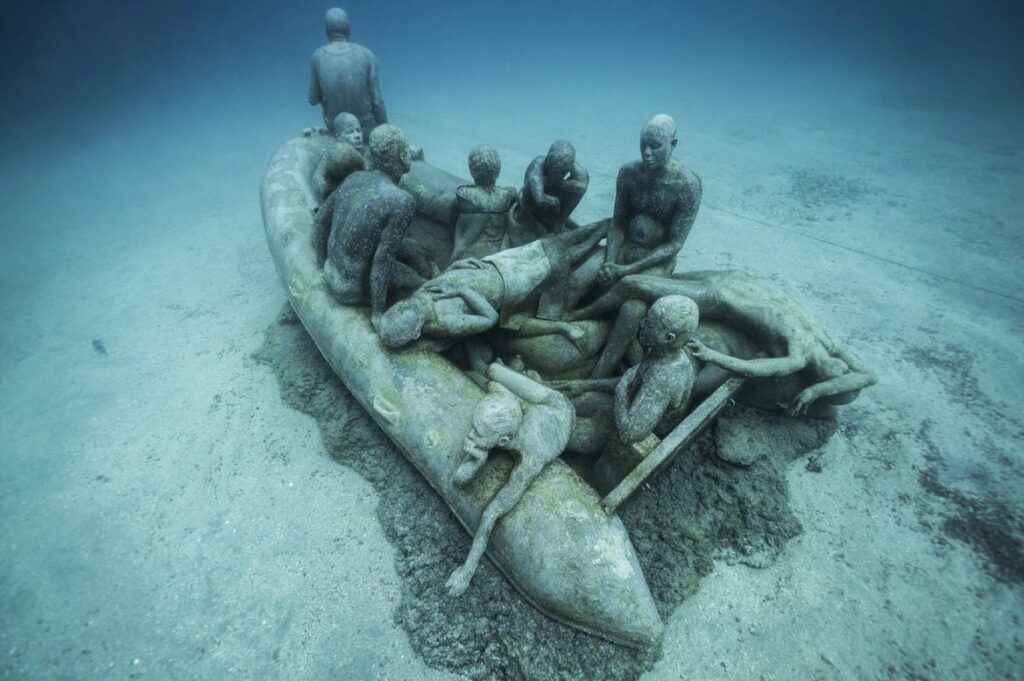
The Future of Underwater Art and Conservation
Taylor continues to develop new installations worldwide, with upcoming projects planned in Australia and the Mediterranean. His work has inspired other underwater sculpture parks and conservation-focused art installations globally.
As ocean ecosystems face increasing threats from climate change, pollution, and overuse, these underwater museums demonstrate how art can contribute meaningful solutions. They show that conservation doesn’t have to be separate from cultural experiences—they can be powerfully combined.
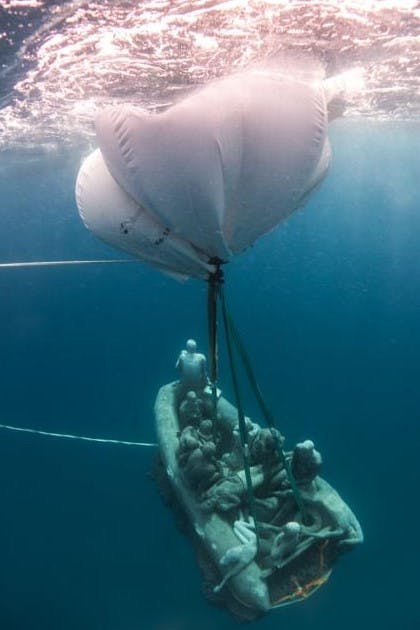
Conclusion: More Than Just Underwater Sculptures
Jason deCaires Taylor’s underwater museums represent a revolutionary approach to both art and marine conservation. Each sculpture begins as a static human form but evolves into a dynamic, living ecosystem.
These installations remind us of our connection to the ocean and our responsibility to protect it. They demonstrate how human creativity can work with nature rather than against it, offering a hopeful model for environmental art.
For divers, snorkelers, and ocean enthusiasts, these underwater museums provide unforgettable experiences that challenge our perception of what art can be and what purposes it can serve. They stand as silent sentinels beneath the waves, gradually transforming as they fulfill their dual mission of environmental restoration and artistic expression.

 Additional Facts
Additional Facts
60 Tons
Largest sculpture Jason deCaires Taylor has installed under water. It’s the largest underwater sculpture every installed, standing at 18 feet tall. The sculpture is called “Atlas” and is installed in the Bahamas.
Taylor has gone on to produce over 1,100 public terrestrial and underwater sculptures worldwide, which are visited by thousands of visitors each week.
25% of all marine species
Coral Reefs harbor at least 25% of all known marine species. These animals (not plants) are some of the planet’s most biologically diverse and valuable ecosystems and are some of the most sensitive to the damaging effects of human activities
70% to 90%
According to a 2021 report by UNEP, without immediate action to limit global warming to 1.5°C, we could lose up to 90% of live coral reefs by 2050. Even with drastic emission reductions, it may still take decades for ocean temperatures to stabilize.




